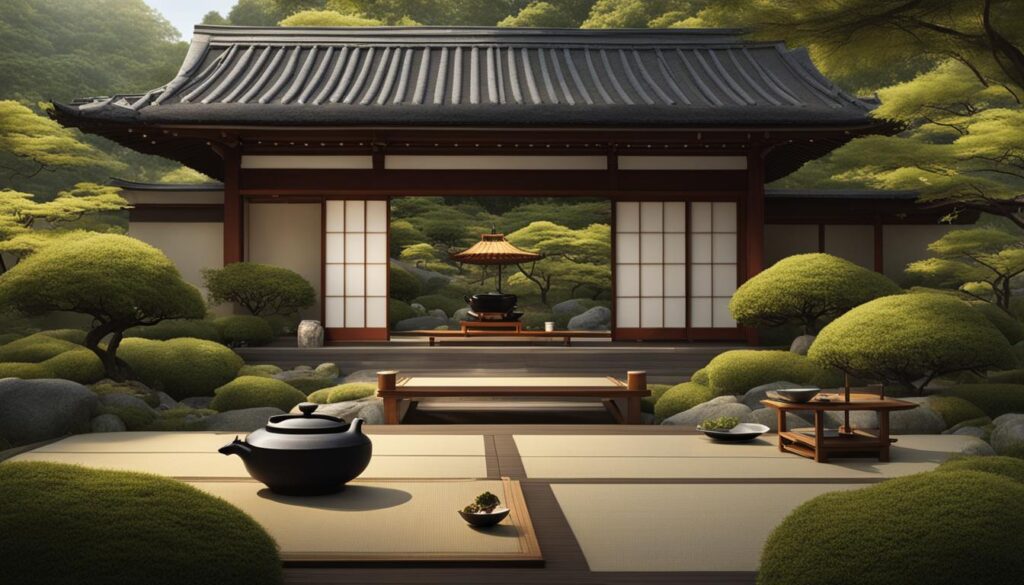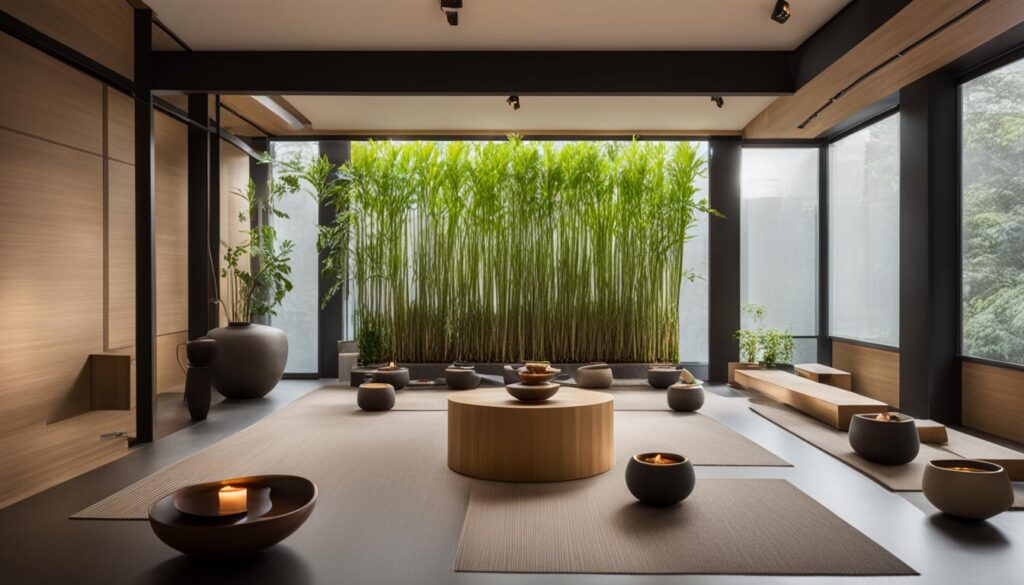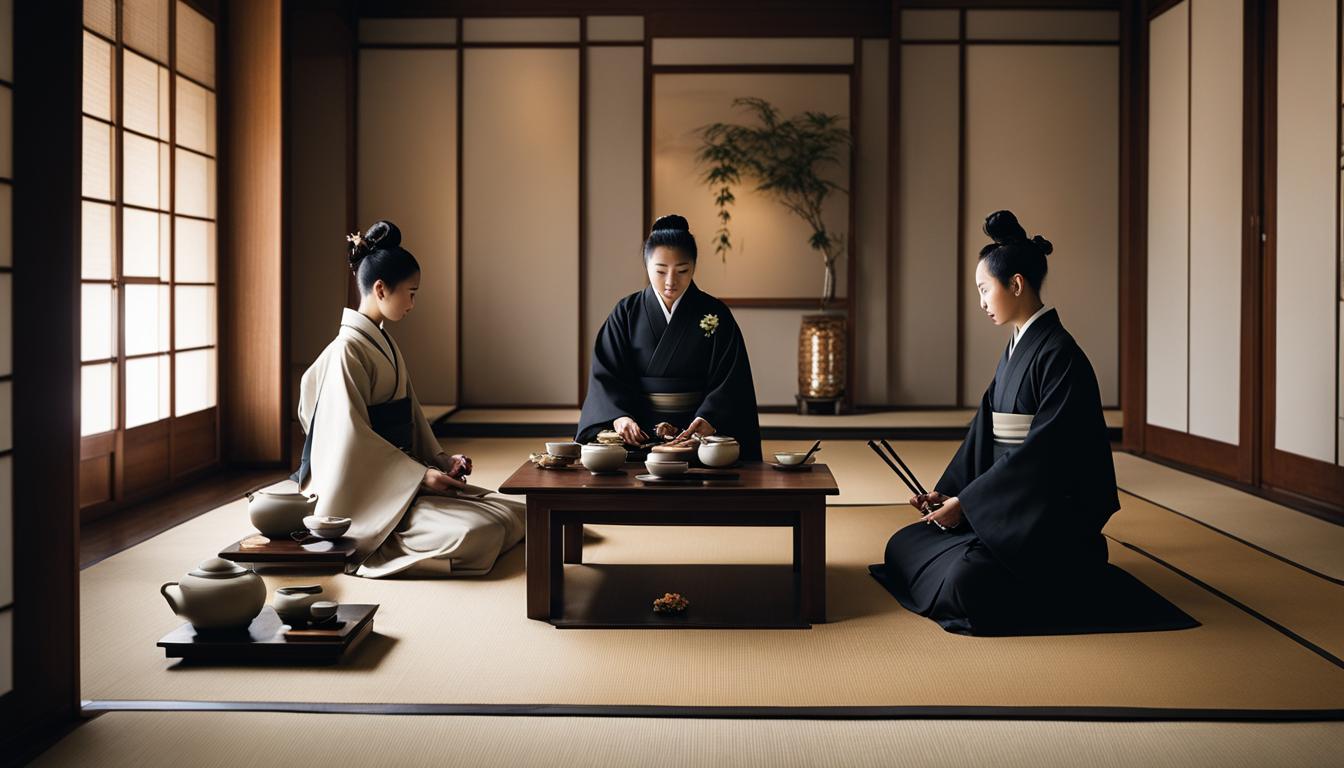Step into the serene world of traditional tea ceremonies, where ancient customs meet modern sensibilities. Today, we explore the significance and relevance of these timeless rituals in the modern world. From the quiet tea rooms of Japan to the bustling cities around the globe, tea ceremonies have evolved to cater to the contemporary tea enthusiasts.
Tea ceremonies offer more than just a soothing cup of tea; they provide a momentary escape from the chaos of daily life. By embracing mindfulness and fostering a sense of harmony, these ceremonies invite us to slow down and appreciate the beauty and taste of tea.
While traditional tea ceremonies have long been associated with Japan, they have found their way into the hearts and lifestyles of people worldwide. Modern adaptations, such as Toda Seizan’s mobile bamboo teahouse ‘Kian,’ have made tea ceremonies accessible to a broader audience, blurring the lines between tradition and modernity.
Join us on a journey to discover the artistry, ritual, and etiquette behind the modern traditional tea ceremonies, and how they continue to shape our present-day culture.
Key Takeaways:
- Traditional tea ceremonies have adapted to suit the contemporary lifestyles of tea enthusiasts.
- Tea ceremonies promote mindfulness, harmony, and wellbeing.
- Modern interpretations make tea ceremonies more accessible to individuals worldwide.
- Tea ceremonies have found their place in the global landscape, transcending cultural boundaries.
- The artistry, ritual, and etiquette of tea ceremonies continue to shape modern trends and hospitality practices.
The Origins and Evolution of the Japanese Tea Ceremony
The tea ceremony, also known as chanoyu or sado, has a rich history that spans centuries. Its origins can be traced back to China, where the practice of tea drinking was introduced to Japan in the 9th century. Over time, the tea ceremony evolved into a distinctively Japanese tradition, deeply ingrained in the country’s culture and way of life.
Zen Buddhism played a significant role in shaping the tea ceremony as we know it today. The connection between Zen and tea began with Eisai, a Buddhist monk who introduced powdered green tea to Japan. The ceremony became a way for monks to practice mindfulness and meditation, focusing on the present moment and finding tranquility in the act of preparing and serving tea.
As the tea ceremony gained popularity among the nobility and samurai class, it became associated with principles such as harmony, respect, purity, and tranquility. These principles are reflected in every aspect of the ceremony, from the utensils used to the movements performed. The tea ceremony became a microcosm of Japanese hospitality and a symbol of cultural identity.
In today’s contemporary society, efforts are being made to preserve and celebrate traditional tea ceremonies. Organizations and tea schools dedicated to the preservation of this ancient art form are actively promoting its continued relevance and cultural significance. By educating and engaging the younger generation, they ensure that the tea ceremony will endure well into the 21st century and beyond.

The Role of Tea Ceremonies in Contemporary Society
Despite the fast-paced nature of modern life, the tea ceremony continues to hold its significance and plays a vital role in Japanese society. It serves as a reminder to slow down, appreciate the present moment, and connect with others on a deeper level. The act of sharing a bowl of tea fosters a sense of community and harmony, promoting interpersonal relationships and well-being.
Moreover, traditional tea ceremonies have expanded beyond Japan and have found their place in contemporary society worldwide. People from different cultures and backgrounds are embracing the beauty and mindfulness that tea ceremonies offer. Whether it’s the serene atmosphere, the meticulous attention to detail, or the opportunity for self-reflection, tea ceremonies provide a meaningful and enriching experience for individuals seeking solace in our modern, fast-paced world.
Preserving Tea Ceremonies in the 21st Century
Preserving the authenticity and cultural heritage of tea ceremonies is essential in the 21st century. As the world becomes increasingly globalized and technology-driven, the significance of traditional practices like the tea ceremony cannot be underestimated. Efforts are underway to safeguard and promote the tea ceremony as a valuable cultural asset.
Through exhibitions, workshops, and cultural exchange programs, the art and traditions of the tea ceremony are shared with a broader audience, ensuring their continued relevance and appreciation. The preservation of tea houses and gardens, the cultivation of traditional tea leaves, and the craftsmanship of tea utensils play crucial roles in maintaining the integrity of this ancient practice.
In conclusion, the origins and evolution of the Japanese tea ceremony are deeply intertwined with Japanese culture and history. Today, traditional tea ceremonies continue to play a significant role in contemporary society, promoting mindfulness, harmony, and a sense of cultural heritage. By preserving and celebrating this ancient art form, we honor the past, experience the present, and ensure that future generations can appreciate the beauty and significance of the tea ceremony.
The Artistry and Ritual of the Tea Ceremony
The tea ceremony is a true display of artistry and precision. Every step, from the preparation of the tea to the serving of each individual guest, is executed with utmost care and intention. This meticulous attention to detail is what sets the tea ceremony apart and creates a truly immersive and captivating experience.
At the heart of the tea ceremony is the artistry of the traditional tea utensils. Each piece, such as the chawan tea bowl, the chasen tea whisk, and the chashaku tea scoop, is crafted with precision and skill. These utensils are not just functional tools but also works of art, with their unique designs and intricate details showcasing the craftsmanship of the artisans.
Furthermore, the tea ceremony’s influence extends beyond its traditional context. Modern adaptations of tea ceremonies have emerged, incorporating contemporary elements while still maintaining the essence of the traditional ritual. These adaptations cater to the evolving tastes and preferences of tea enthusiasts, making the tea ceremony accessible to a wider audience and ensuring its continued relevance in today’s world.
| Modern adaptations of tea ceremonies | Tea ceremony’s impact on current trends | Tea ceremony’s influence on modern hospitality |
|---|---|---|
| 1. Tea tasting events | 1. Mindfulness and wellness trends | 1. Incorporation of tea ceremonies into hotel experiences |
| 2. Tea pairing with unconventional flavors | 2. Slow living movement | 2. Tea-inspired cocktails and menu items |
| 3. Tea workshops and classes | 3. Sustainable and eco-friendly practices | 3. Tea-inspired interior design and tablescapes |
The tea ceremony is not only a timeless tradition but also a source of inspiration for modern trends and practices. Its emphasis on mindfulness, harmony, and aesthetics resonates with the current cultural landscape, making it a relevant and influential practice in today’s society.
The Tea Ceremony and Modern Hospitality
The influence of the tea ceremony extends to the world of modern hospitality. From luxury hotels to trendy cafes, tea ceremonies have found their place in the hospitality industry. The incorporation of tea ceremonies into hotel experiences, for example, adds a touch of elegance and cultural authenticity to the guests’ stay.
Moreover, tea-inspired cocktails and menu items have become a popular trend, with mixologists and chefs drawing inspiration from the flavors and rituals of the tea ceremony. This fusion of traditional and contemporary elements creates a unique and memorable dining experience for customers.
Overall, the artistry and ritual of the tea ceremony continue to inspire and shape not only the traditional tea culture but also modern trends in hospitality, wellness, and aesthetics. Its timeless appeal and ability to foster mindfulness and connection make it a cherished practice that transcends borders and generations.
Experiencing the Tea Ceremony: Etiquette and Authenticity
When engaging in a tea ceremony, it is essential to understand and adhere to the proper etiquette and mannerisms associated with this traditional practice. The tea ceremony is steeped in centuries of history and cultural significance, and observing the appropriate protocols is crucial to fully appreciating the experience.
First and foremost, participants should dress appropriately for the occasion. The tea ceremony is a formal affair, and wearing clean, modest clothing is considered respectful. It is also customary to remove your shoes before entering the tea room, symbolizing a step into a sacred space.
During the ceremony, it is important to observe proper social etiquette. This includes displaying respectful behavior, using polite language, and being mindful of personal space. While the host will guide participants through the various rituals and gestures, it is essential to follow their lead and respond with gratitude and appreciation.
“The tea ceremony is a celebration of mindfulness and harmony. It provides a moment of respite from the hustle and bustle of modern life, allowing us to connect with ourselves and others on a deeper level.”
Traditional tea ceremonies often take place in purpose-built tea houses, but there are also opportunities to experience the ceremony in urban settings, cultural facilities, and hotels. These experiences offer a blend of authenticity and accessibility, making the tea ceremony more widely available to modern tea enthusiasts. Whether in a serene tea garden or a contemporary venue, the essence of the tea ceremony remains intact, providing a peaceful and introspective experience.
| Tea Ceremony Etiquette Tips | Do’s | Don’ts |
|---|---|---|
| 1. Dress appropriately | – Wear clean, modest attire | – Wear revealing or casual clothing |
| 2. Remove your shoes | – Take off your shoes before entering the tea room | – Keep your shoes on |
| 3. Follow the host’s lead | – Observe and mirror the host’s gestures | – Act without guidance or instruction |
| 4. Be respectful | – Use polite language and show gratitude | – Speak loudly or disruptively |
| 5. Practice mindfulness | – Be present and fully engage in the ceremony | – Allow distractions to take your focus away |
Tea Ceremonies in the Modern World
The tea ceremony’s relevance in modern culture cannot be understated. In a fast-paced and digitally connected world, the tea ceremony offers a sanctuary of calm and mindfulness. Its influence reaches beyond traditional tea houses, transcending cultural boundaries and finding expression in contemporary settings.
By embracing the art of the tea ceremony and integrating it into various aspects of modern life, we can experience the profound impact it has on our well-being, appreciation for beauty, and connection with others. Whether attending a formal tea ceremony or enjoying a casual cup of tea with friends, the spirit of harmony and mindfulness embodied in the tea ceremony enriches our lives in countless ways.

Conclusion
Traditional tea ceremonies continue to have a profound impact on current trends and modern hospitality practices. Their influence reaches far beyond the traditional tea houses, captivating a wider audience and shaping our cultural experiences.
The artistry and ritual of the tea ceremony are not confined to the past; they continue to inspire and influence the present. From the meticulous choreography to the symbolic meanings behind each step, the tea ceremony showcases the beauty of tradition in a contemporary context.
As we navigate the complexities of the 21st century, the tea ceremony offers us a serene and meaningful experience, connecting us to the rich traditions and values of the past. It allows us to ground ourselves in the present moment, promoting mindfulness and tranquility.
Whether experienced in purpose-built tea houses, urban settings, or cultural facilities, the tea ceremony remains a timeless practice that invites us to appreciate the artistry, embrace the ritual, and engage with the spirit of hospitality. Its impact on current trends and influence on modern hospitality practices is undeniable, making the tea ceremony an essential part of our cultural landscape.
FAQ
What is the significance of traditional tea ceremonies in today’s modern world?
Traditional tea ceremonies hold a significant place in Japanese culture and extend beyond Japan’s borders. They promote mindfulness, harmony, and wellbeing, providing individuals with an opportunity to ground themselves in the present moment and appreciate the beauty and taste of tea.
What is the origin of the Japanese tea ceremony?
The tea ceremony, also known as chanoyu or sado, originated in China but has become a quintessentially Japanese experience. It is deeply rooted in Japanese culture and serves as a microcosm of the country’s traditional sense of hospitality and omotenashi.
How are traditional tea ceremonies preserved and celebrated in today’s society?
Efforts are being made to preserve and celebrate traditional tea ceremonies, ensuring their continued relevance and cultural significance. These ceremonies are meticulously choreographed art forms that showcase the artistry and craftsmanship of traditional tea utensils.
How can individuals experience a tea ceremony?
Participants can experience a tea ceremony by observing proper etiquette and mannerisms. Traditional tea ceremonies typically take place in purpose-built tea houses, but there are also opportunities to experience them in urban settings, cultural facilities, and hotels.
What is the impact of tea ceremonies on modern trends and hospitality practices?
The artistry, ritual, and etiquette of the tea ceremony continue to shape current trends and influence modern hospitality practices. The influence of tea ceremonies extends beyond traditional tea houses and captivates a wider audience.





